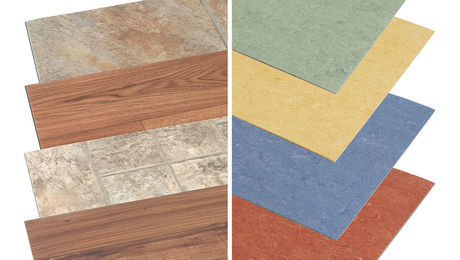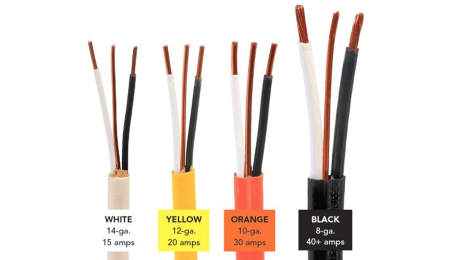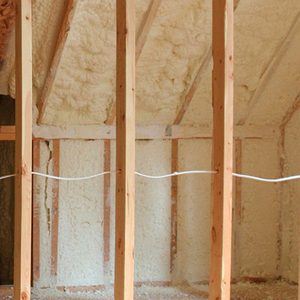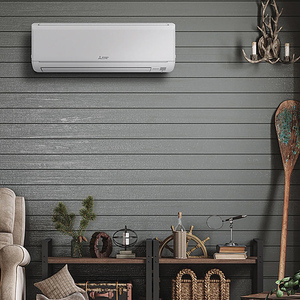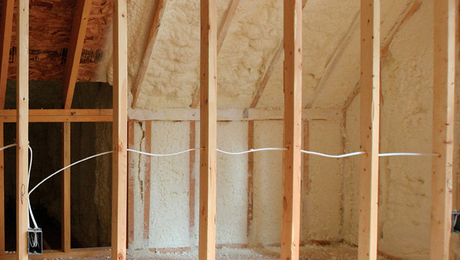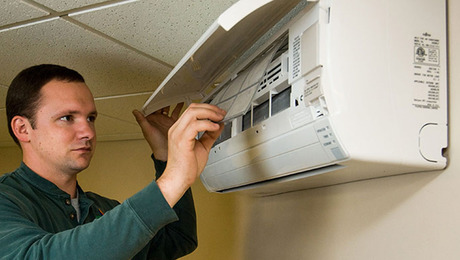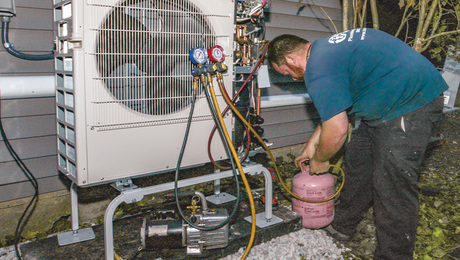What’s the Difference: Whole-House Fans vs. Powered Ventilators
We regularly receive emails at Green Building Advisor from homeowners with questions about attic fans: What’s the purpose of the fan in my attic? How often should I run it? Do I need a bigger fan? Before I address these recurring questions, it’s important to note that there are two types of attic fans: whole-house fans and powered attic ventilators. At the risk of oversimplifying, whole-house fans are good. Powered attic ventilators are bad.
Whole-house fans
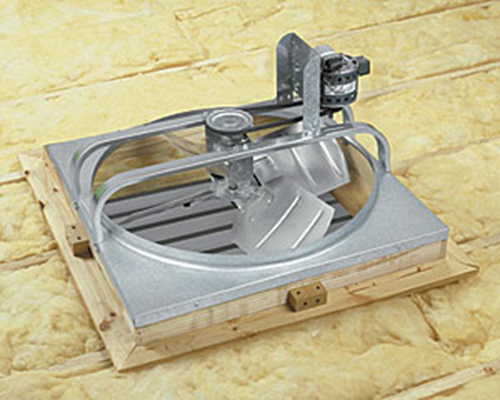
In most cases, a whole-house fan is mounted in the attic floor, above a rectangular grille in the ceiling of a central hallway. Once the outdoor temperature cools down, the homeowner opens a few downstairs windows, ensures that the fireplace damper is closed, and turns on the fan. Warm air is drawn into the attic, where it is exhausted through the vents. It is replaced by cool air pulled in through the windows.courtesy of Air Vent
A whole-house fan is an attic-mounted fan that exhausts air from a home at night, when the heat of the day has passed and the outdoor temperature has dropped enough to feel comfortable. The main advantage of using a whole-house fan instead of an air conditioner is to save energy. A whole-house fan usually draws between 200w and 700w, in contrast to a central air conditioner, which draws 2000w to 5000w.
The fan pulls air from a central hallway and blows it into the attic. Because whole-house fans are relatively powerful—usually rated between 2000 cfm and 6000 cfm—they quickly exhaust hot indoor air, allowing cooler outdoor air to enter through downstairs windows. Once the house has cooled, the fan can be turned off and the windows closed. Keeping windows closed from early morning until evening prevents cool air inside the house from escaping.
Because a whole-house fan pulls all the hot air from the house into the attic, the fan won’t work effectively unless the attic has large openings to exhaust the hot air. It’s better to have too much vent area than not enough. A good rule of thumb is to have 1 sq. ft. of net free vent area for every 750 cfm of fan capacity. The net free vent area is the total size of the vents, minus the area covered by obstructions such as louvers and insect screens. The vent area can be made up of a combination of soffit vents, ridge vents, and gable vents.
Where does a whole-house fan make sense?
Whole-house fans make sense in areas with cool nights. If you live in a place where the temperature stays in the 80s all night long, a whole-house fan won’t help you much. However, even if you need to seal your house and turn on your air conditioner during the hottest months of summer, a whole-house fan may be useful during the spring and fall, when nights are cool but days can be hot.
Whole-house fans don’t make sense for homes in neighborhoods where security concerns prevent homeowners from leaving their windows open. They also don’t make sense for homes with a gas water heater or furnace in the attic; such a powerful fan can extinguish the pilot light or interfere with the draft.
Because they depressurize a home, whole-house fans can cause atmospherically vented appliances—for example, a gas-fired water heater—to backdraft. If the homeowner remembers to open plenty of windows before turning on the fan, backdrafting probably won’t occur. However, the best way to avoid backdrafting problems in a house with a whole-house fan is to make sure that the appliances have sealed combustion or direct venting rather than atmospheric venting.
Whole-house fans represent a big hole in your ceiling—a hole that is likely to leak a lot of heat during the winter unless it is properly sealed with an insulated cover.
Powered attic ventilators
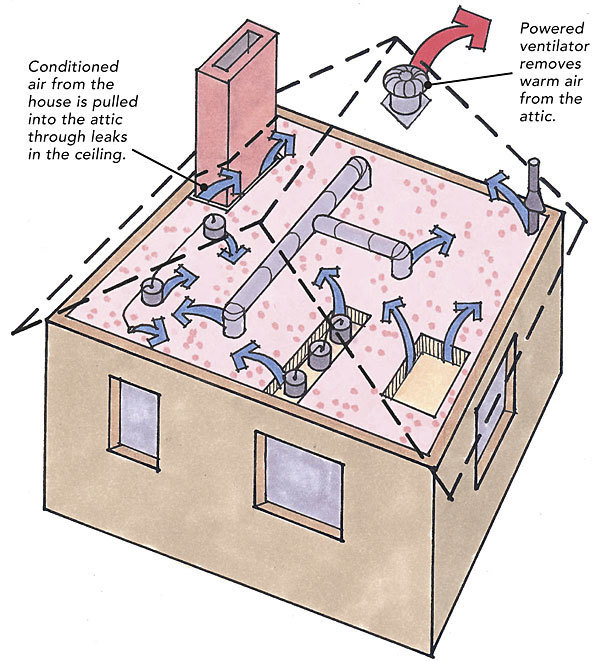
Powered attic ventilators are usually mounted on a sloped roof, but they also can be installed in the gable wall of an attic. Most are controlled by a thermostat so that they turn on when the attic gets hot.
The intent of a powered attic ventilator is to exhaust hot air from the attic and replace it with cooler outdoor air. The idea is to save energy by reducing the run-time of your air conditioner. Installers evidently hope that a powered attic ventilator will save more energy than the electricity required to run the fan.
Although the logic behind powered attic ventilators is compelling to many hot-climate homeowners, these devices can cause a host of problems. Here’s the basic one: A powered attic ventilator will depressurize your attic, and it’s hard to predict where the makeup air will come from. Although the arrows in some sales brochures show outdoor air entering the attic through the soffit vents, that’s not what usually happens.
In an online Q&A post for Advanced Energy, a nonprofit corporation in North Carolina, building-science consultant and researcher Arnie Katz says this: “In most of the houses we’ve tested, the attic fans were drawing some of their air from the house, rather than from the outside. In other words, they are cooling the attic by drawing air-conditioned air out of your house and into the attic. Air-conditioning the attic is not recommended by anyone I know as an effective strategy for reducing your bills.”
Katz also mentions a more alarming problem with powered attic ventilators: “In one house we tested, we measured substantial levels of carbon monoxide (CO) in the daughter’s bedroom in the basement. The CO was coming from the water heater next to the bedroom, which was backdrafting. The daughter had been suffering from flulike symptoms for some time. The backdrafting was caused by the powered attic vent fan.”
What do I do if my attic is too hot?

In many homes, powered attic ventilators pull conditioned air out of the house and into the attic through cracks and penetrations in the ceiling. As the cool air is being sucked out of the house through the ceiling, hot exterior air enters the house through other cracks to replace the exhausted air. The air conditioner then has to work harder than ever as it struggles to cool the incoming outdoor air.courtesy of A Wise Inspector Service
A hot attic isn’t necessarily a problem. If you don’t have any ductwork or HVAC equipment up there, who cares how hot it gets? After all, you should have a thick layer of insulation on your attic floor to isolate your hot attic from your cool house.
If you do have ductwork or HVAC equipment in your attic, the designer and builder of your home made a major mistake. Solutions include:
- Moving your ductwork and HVAC equipment to the interior of your home.
- Sealing leaky duct seams and adding insulation on top of your ductwork.
- Moving the insulation from your attic floor to the sloped roof assembly, creating an unvented conditioned attic.
If you believe that your house has a hot ceiling during the summer, the solution is not a powered attic ventilator. The solution is to seal any air leaks in the ceiling and to add more insulation to the attic floor.
Illustrations courtesy of Martha Garstang Hill
